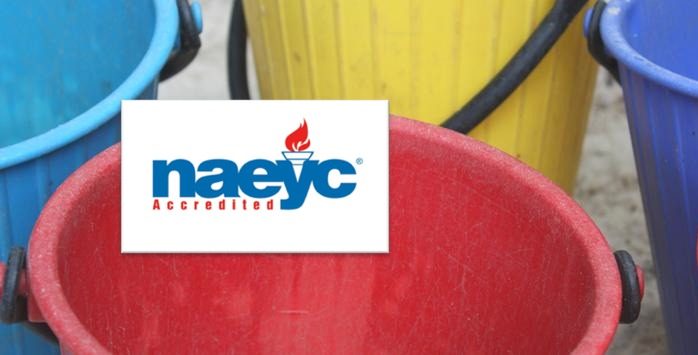Three-Year-Old Classes
The “thunderous threes” are a wonderful time in a child’s life as they learn about themselves and the world around them. Here are some of the things you can expect in class when your child moves into one of our three-year-old classes next fall.
All of our classes meet from 9am to 12:15 pm on their assigned days.
A Typical Day
1. Free Play: During this part of the day, which occurs first thing in the morning in both classes, children are free to choose what they would like to do in the classroom. Choices are many and varied and include creative projects, imaginary play, dress up, block building, manipulative toys, puzzles, listening to stories, fine motor activities, sensory table, easel painting and small group or individual games and activities that provide early math and literacy practice. During free play, children are guided to interact with their peers in positive ways and solve conflicts that arise with the support and encouragement from the adults in the room.
2. Circle Time: Each classroom has two brief circle times per day during which children learn to sit together, listen and participate appropriately in a variety of activities including finger plays, felt board activities, group games, music and movement.
3. Snack Time: During snack time, children are encouraged to use polite manners, have a conversation with the other children and adults, and learn to manage their own snack things over time.
4. Playground Time: During this favorite time of day, children get a good opportunity to move their bodies by running, climbing, pedaling, sliding and swinging. Children are also encouraged to do as much of the “prep” for playground time as possible by themselves, which includes putting on coats, hats, mittens, etc. by themselves in the winter.
5. Story Time: Both classes end the day with a story read by the teacher. During this time, children learn to sit and listen quietly to the story and often participate in answering comprehension questions afterwards.
6. Sharing Time: At sharing time, the co-oper’s child has the opportunity to bring something from home to share in front of the group. The sharer practices speaking to the group and the other children practice raising their hands to ask questions or make comments.
Development
Of course there is not really a “typical” three-year-old, just individual three-year-olds! In general, three-year-olds are quickly becoming more independent than they were as toddlers in all areas of development. They are delighted with their new-found skills and prowess and are often quite full of themselves! Because of that, they are a lot of fun to be around. Here are some characteristics that three-year-olds may share:
Physical Development
Gross Motor
• very active; may have a hard time sitting still
• walks up steps with alternating feet
• hops
• walks on toes
• jumps from a step
• begins to pedal a tricycle
• begins to throw, catch and kick a ball
Fine Motor
• begins to move from fist grip to tripod grip
• begins to draw circles and faces
• may begin to write his/her name as 4th birthday approaches
• begins to use scissors
• dresses self, learns to button, snap and zip
• can stack blocks
• brushes teeth with help
• uses utensils when eating
Language
• quickly expanding vocabulary
• uses sentences of increasing length/complexity
• begins to ask “why” questions
• begins to tell stories
• speech becomes increasingly more understandable to others
• many 3s stutter as they acquire new language skills; usually this is a normal period of dysfluency during language development that resolves on its own within 6 months or so.
Social/Emotional
• Developing interest in peers; more collaborative/cooperative play, less parallel play
• Blossoming of friendships, shows affection to friends as well as family members (a great age to start one-on-one play dates; each child’s parents may still want to be present)
• Beginning to share, but it’s still difficult: it’s easier when guided by an adult in turn-taking
• Imaginative/fantasy/role-acting play develops
• imaginary friends
• fear of imaginary things like monsters
Cognitive
• able to follow simple directions
• able to remember simple rhymes and songs
• can understand and follow daily routines
• begins to acquire facts on topics of interest
• learns colors and shapes
• begins to recognize letters and numbers
• developing sense of humor; loves to laugh with peers
Three is an exciting and sometimes turbulent year full of tremendous growth in all areas of development. It is the year in which your child goes from being a dependent toddler to a very independent, capable preschooler.

